Connecting Hasura to an Aiven MySQL Database
Introduction
This guide explains how to connect a new or existing Aiven MySQL database to a Hasura instance, either on Hasura Cloud or via one of our self-hosted solutions.
If you plan on using Hasura Cloud, which we recommend, follow steps 1 and 2 below. If you're self-hosting a Hasura instance and already have a project running, skip to step 3.
Aiven-hosted MySQL databases are supported from Hasura v2.35.0 onwards.
Step 1: Sign up or log in to Hasura Cloud
Navigate to Hasura Cloud and sign up or log in.
Step 2: Create a Hasura Cloud project
On the Hasura Cloud dashboard, create a new project:
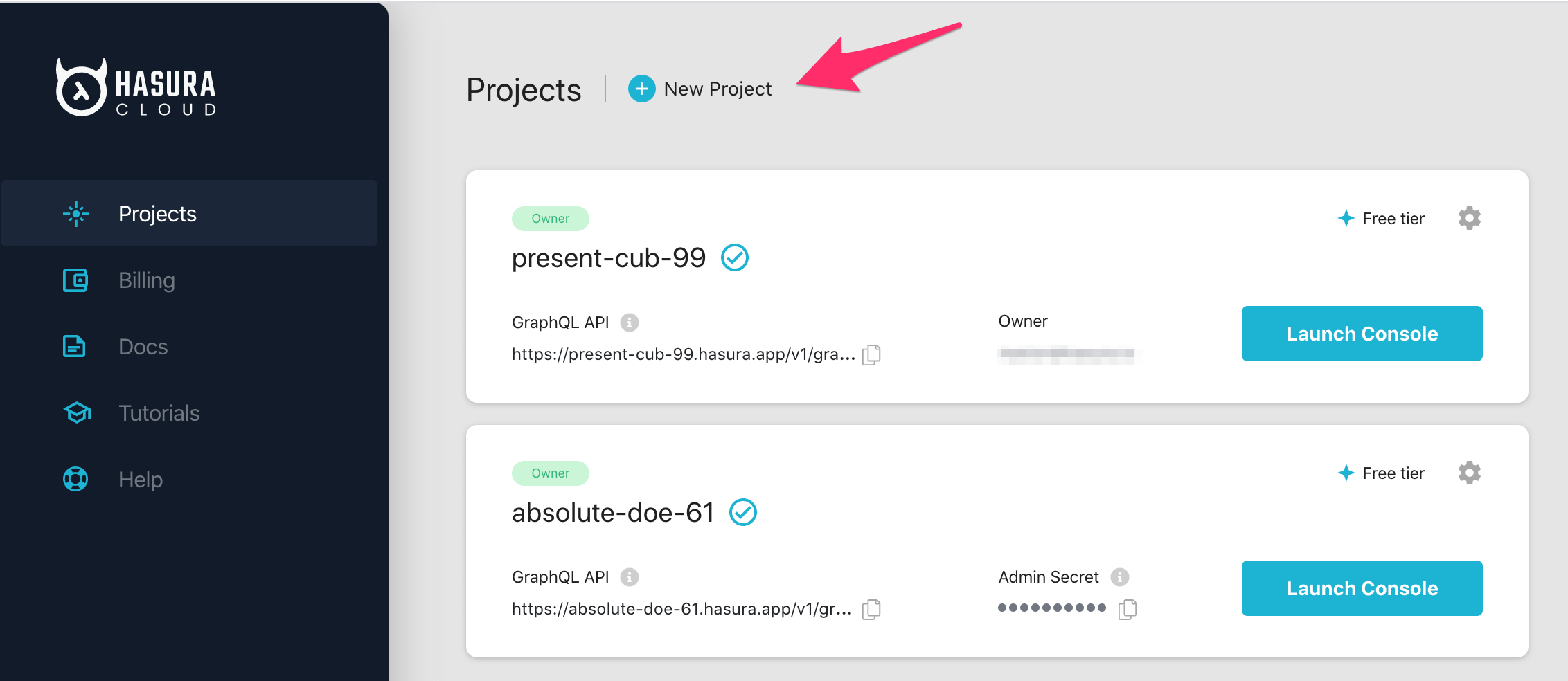
After the project is initialized successfully, click on Launch Console to open the Hasura Console in your browser.
On the Hasura Console, navigate to the Data tab and choose Connect Existing Database. Choose the MySQL driver and
then click Connect Existing Database:
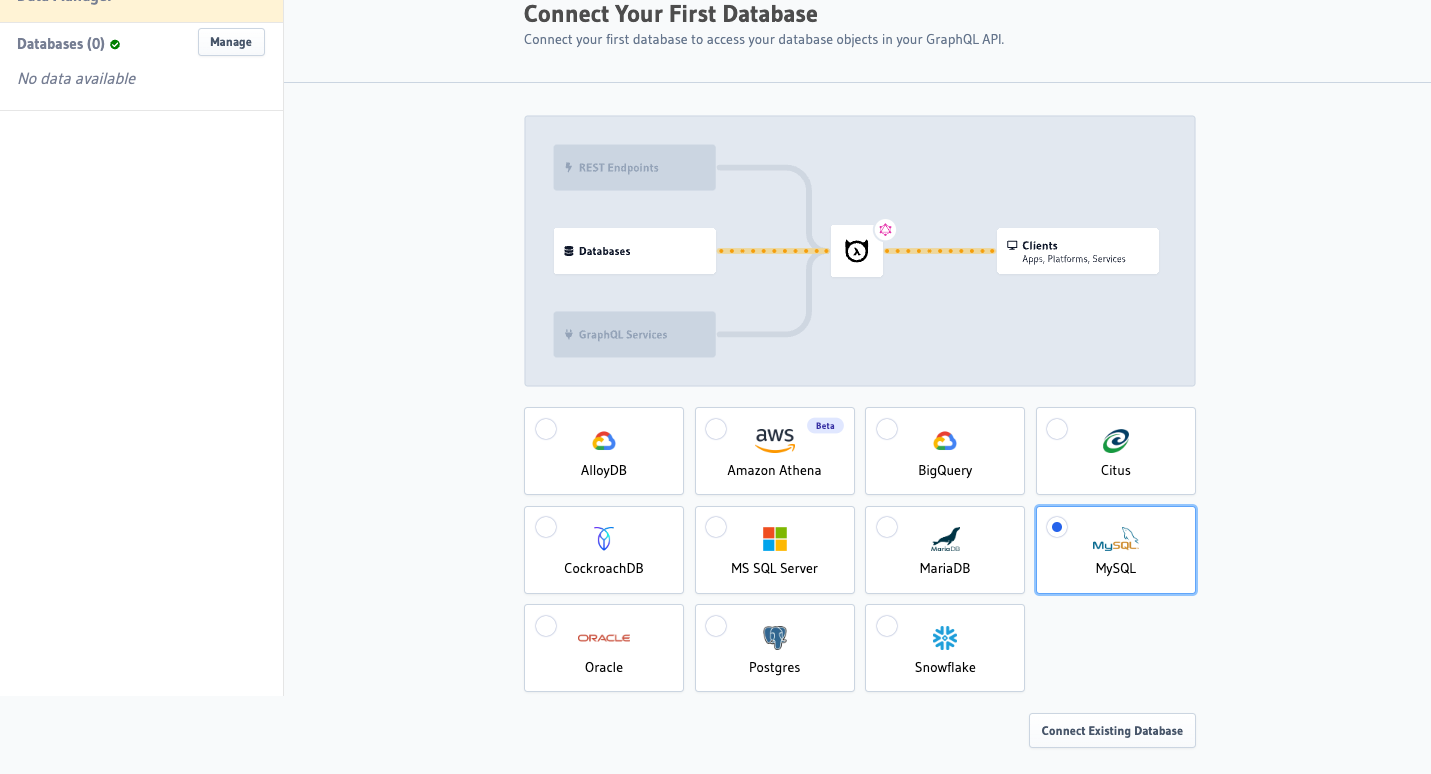
We'll provision the database on Aiven in the next step and then return to this page to complete the connection.
Step 3: Create a MySQL DB on Aiven
If you have an existing Aiven MySQL database, you can skip this step and move on to step 4.
Log into the Aiven console.
On the Aiven console, click + Create a new service and choose MySQL:

Scroll down and select the Cloud Provider, Region and Service Plan based on your requirements. Then click
Create free service:
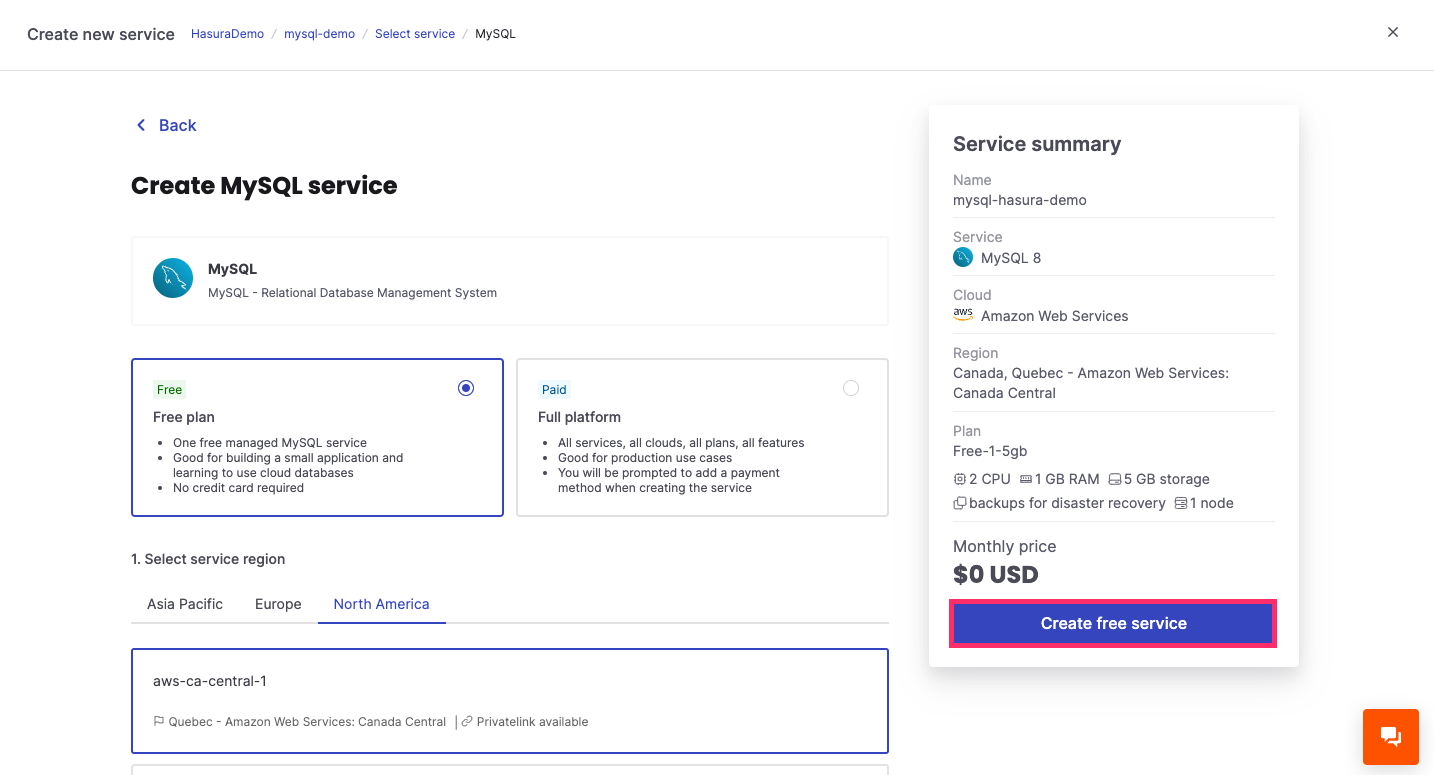
Step 4: Allow connections to your DB from Hasura
On the Services dashboard, click on your DB and scroll down to Allowed IP Addresses and click on Change:
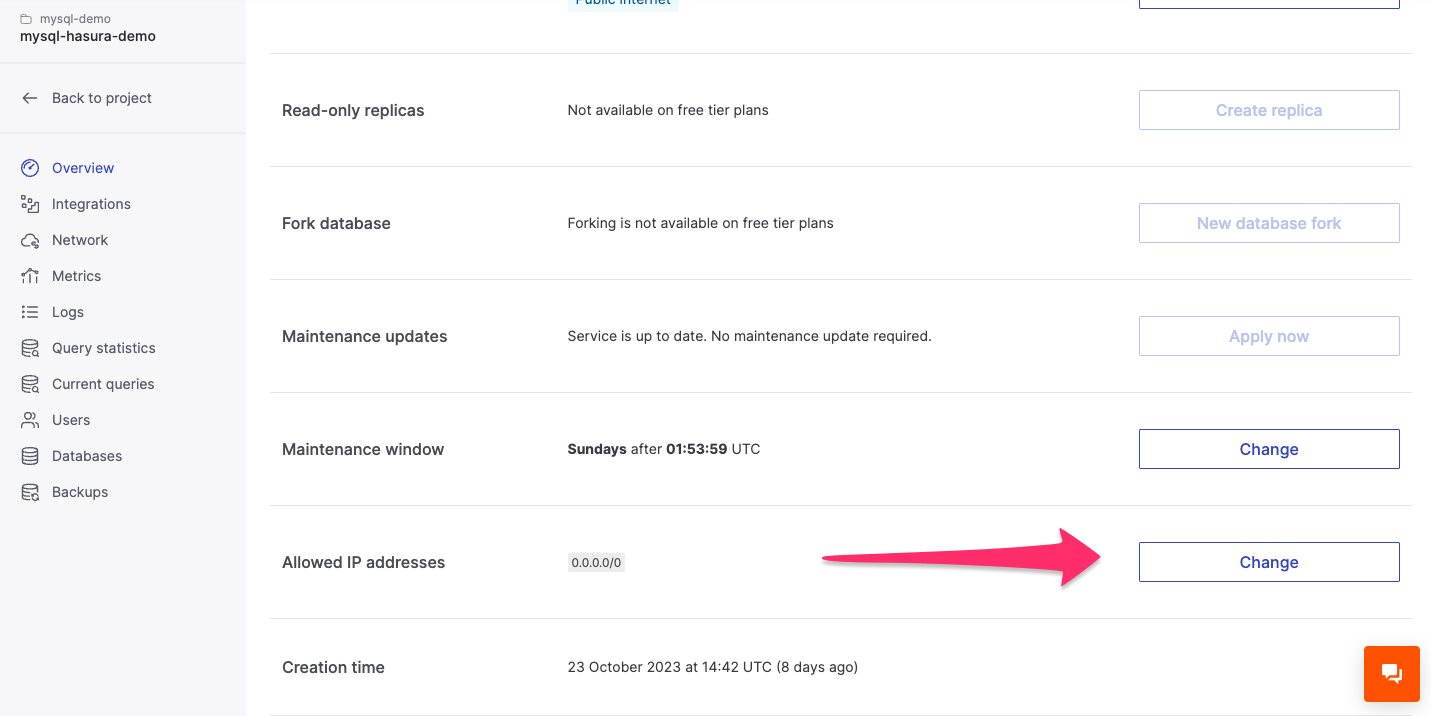
If you're using Hasura Cloud, you can quickly find your IP address from the Hasura Cloud IP field on the project's
details view:
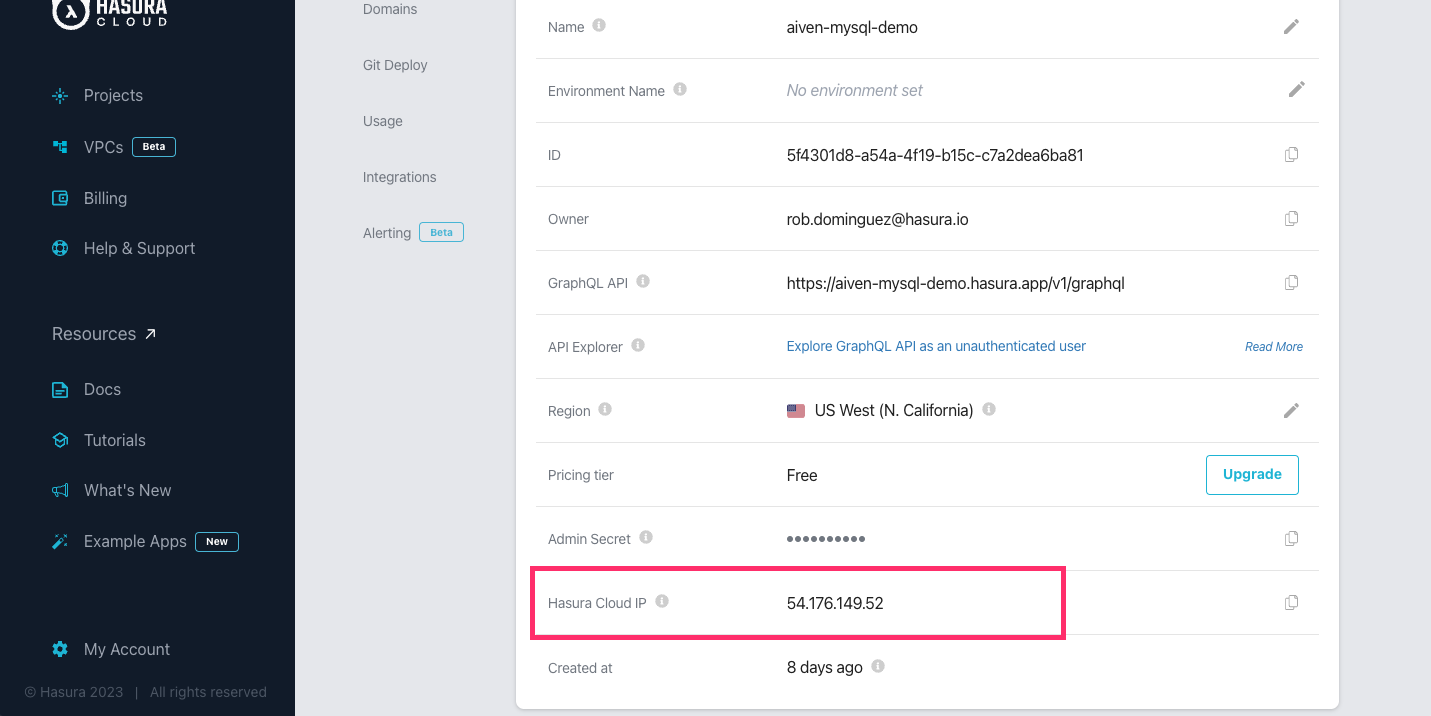
If you're using a self-hosted solution, you'll need to determine the IP address manually depending on your hosting service.
Add the Hasura IP address that you copied, click on the +:
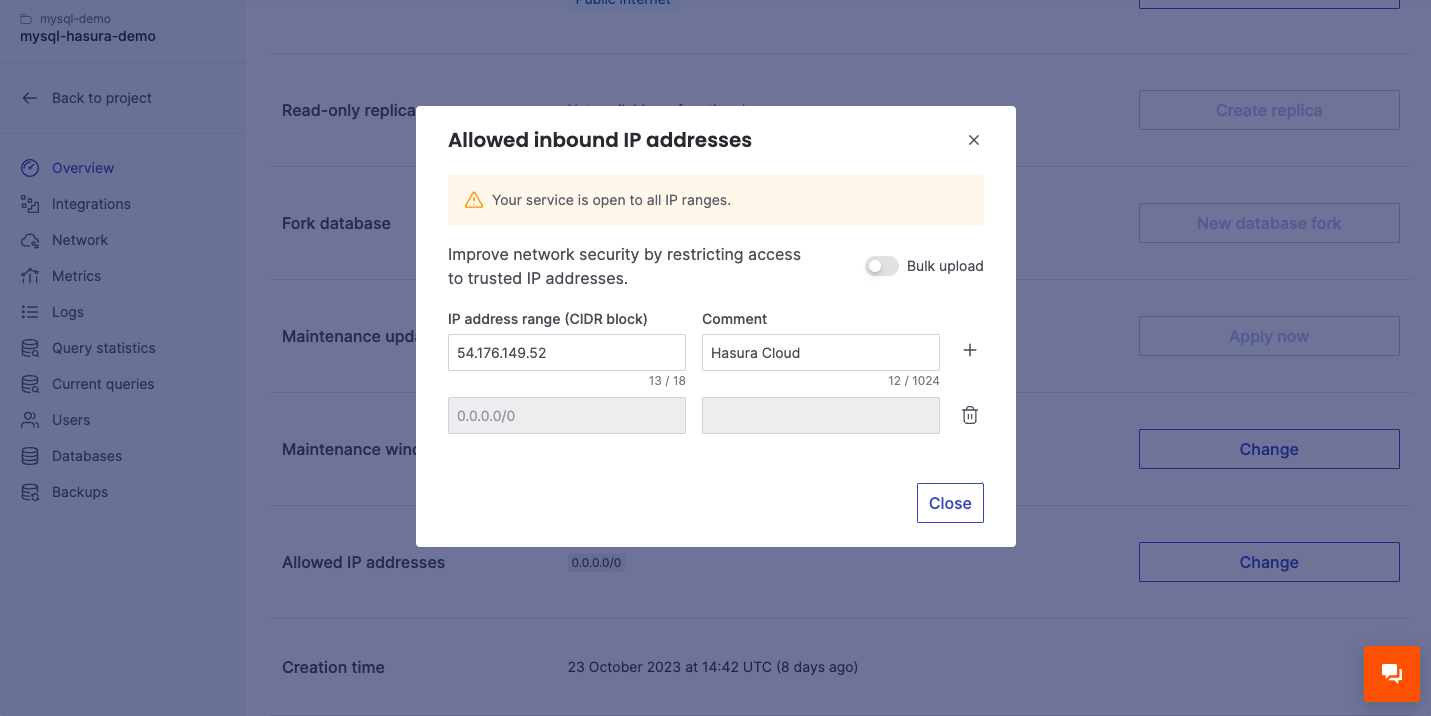
Then click on Close.
Step 5: Get the database connection URL
The MySQL connector utilizes JDBC connection strings to connect to the database. The format of the connection string is as follows:
jdbc:mysql://<hostname>:<port>/<database name>?user=<username>&password=<password>
You'll have to transform the connection string provided by Aiven into the format above. Navigate to the Overview tab
of your database dashboard and use the Service URI to construct the connection string:

Step 6: Finish connecting the database
Back on the Hasura Console, enter the database URL that we retrieved in step 5:

Then click Connect Database.
For security reasons, it is recommended to set database URLs as env vars and using the env vars to connect to the databases in place of the raw database URLs.
Voilà. You are ready to start developing.
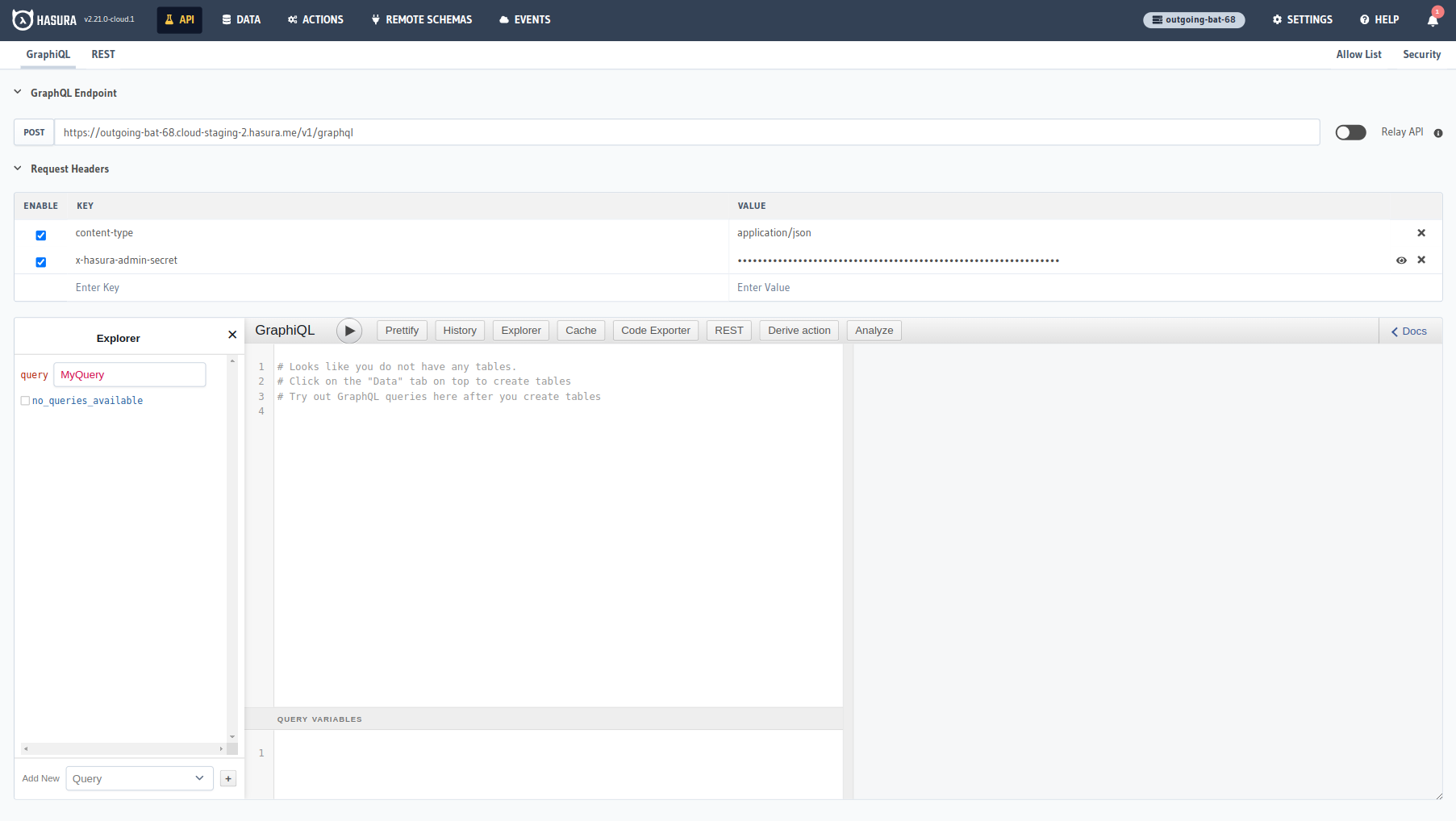
Next steps
You can check out our 30-Minute Hasura Basics Course and other GraphQL & Hasura Courses for a more detailed introduction to Hasura.
If using Hasura Cloud, you can also click the gear icon to manage your Hasura Cloud project. (e.g. add collaborators, env vars or custom domains).

For more information on which MySQL features we support, check out this page.